Abstract
A family study of cleft lip, with or without cleft palate, was based on those treated by operation at The Hospital for Sick Children, London, between 1920 and 1939 in order to give information on the proportion affected of children and grandchildren. The probands were those who had survived, were successfully traced, and found to have had at least one child. Care was taken to exclude patients who were traced through a child, whether normal or affected, and not through the usual tracing procedure. Patients with recognised syndromes were also excluded. Because the series was based on patients who had survived and reproduced it was biased in favour of those with milder degrees of the malformation, and against those with any severe associated malformation. The proportion affected of children of probands was 3.15% (+/- 0.56), of sibs 2.79% (+/- 0.52), and of parents 1.18% (+/- 0.37), respectively. The lower proportion of parents affected is attributed to reduced reproductive fitness of patients born two generations ago. The proportion affected of nephews and nieces, aunts and uncles, and grandchildren was 0.47% (+/- 0.18), 0.59% (+/- 0.13), and 0.8% (+/- 0.6) respectively. The proportion affected of first cousins was 0.27% (+/- 0.08). The birth frequency of cleft lip (+/- cleft palate) is estimated to be about 0.1% in England. There were two first cousin and one second cousin marriages among the marriages of the parents. There was no increase of cleft palate among the relatives of the probands. The proportion of sibs affected increased with increasing severity of the malformation in the proband, where the proband was female, and where the proband had an affected parent or already had one affected sib. It was not, however, increased where a more remote relative was affected. The proportion of children affected was not increased when the proband had an affected parent or sib, but few families provided information. The most economical hypothesis to explain the findings is the multifactorial threshold model. The birth frequency of the malformation and the family patterns found make it improbable that one single mutant gene makes a major contribution to the liability to develop the condition.
Full text
PDF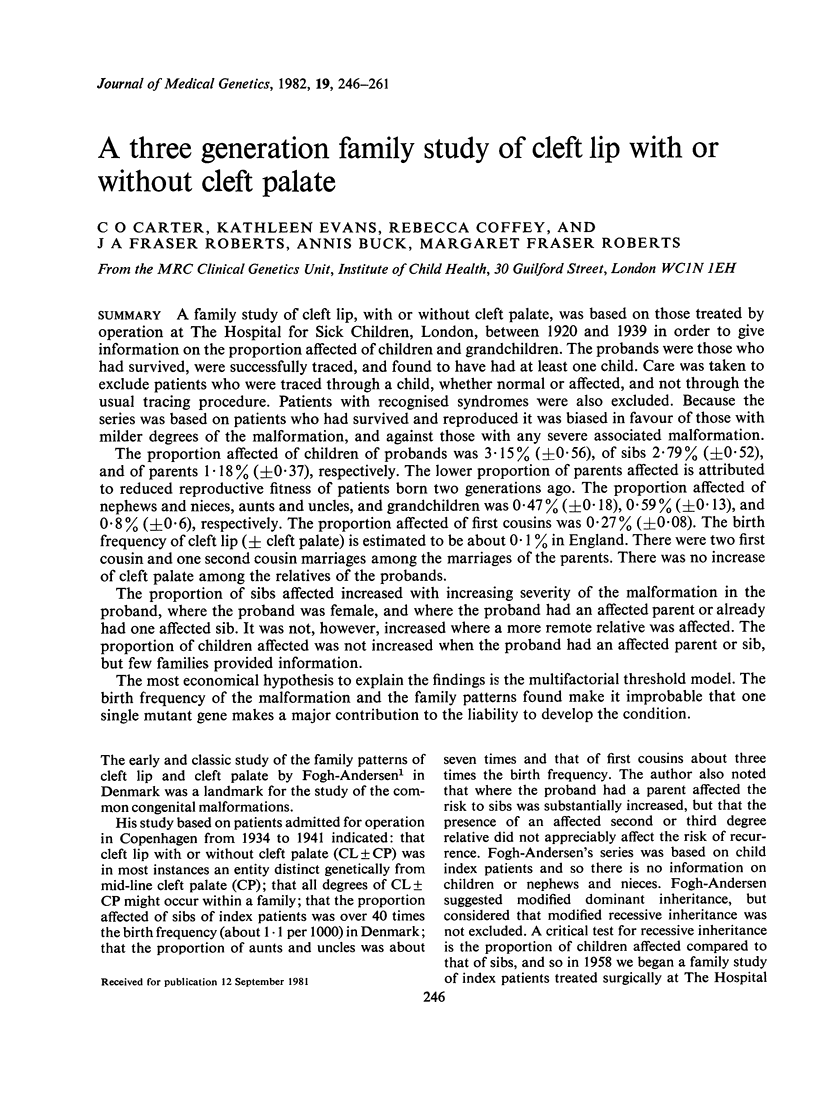
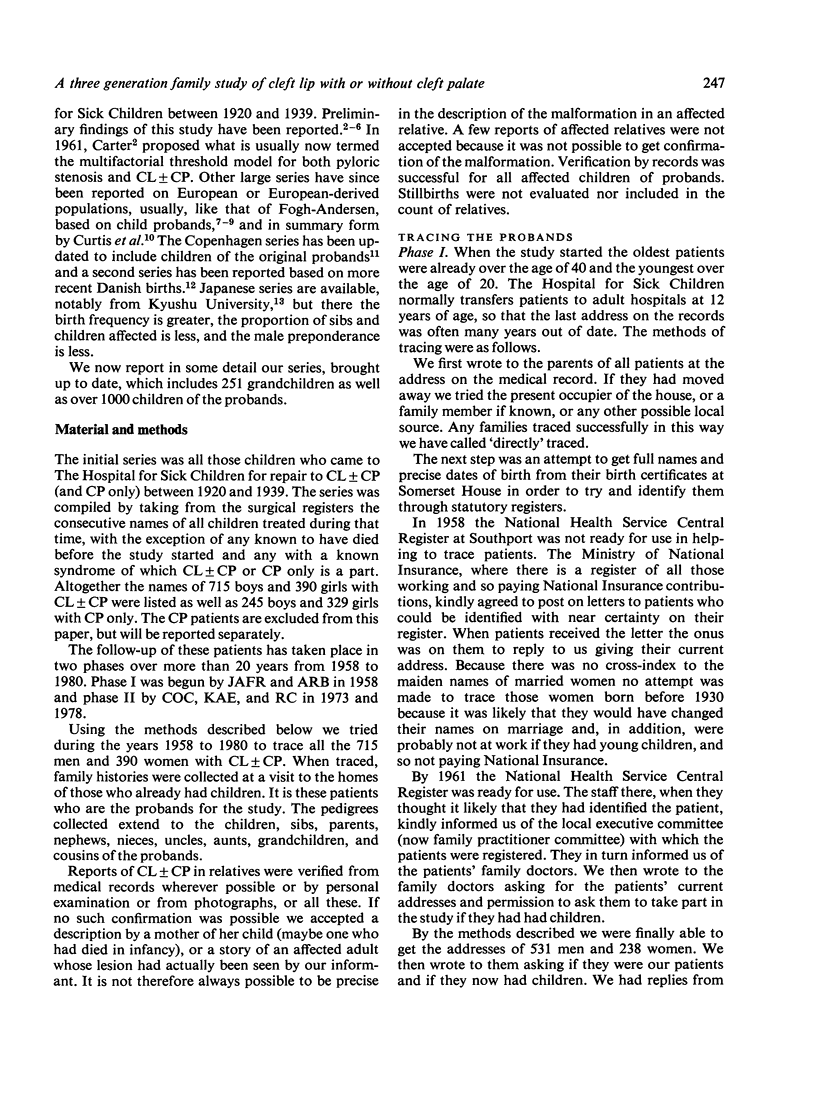
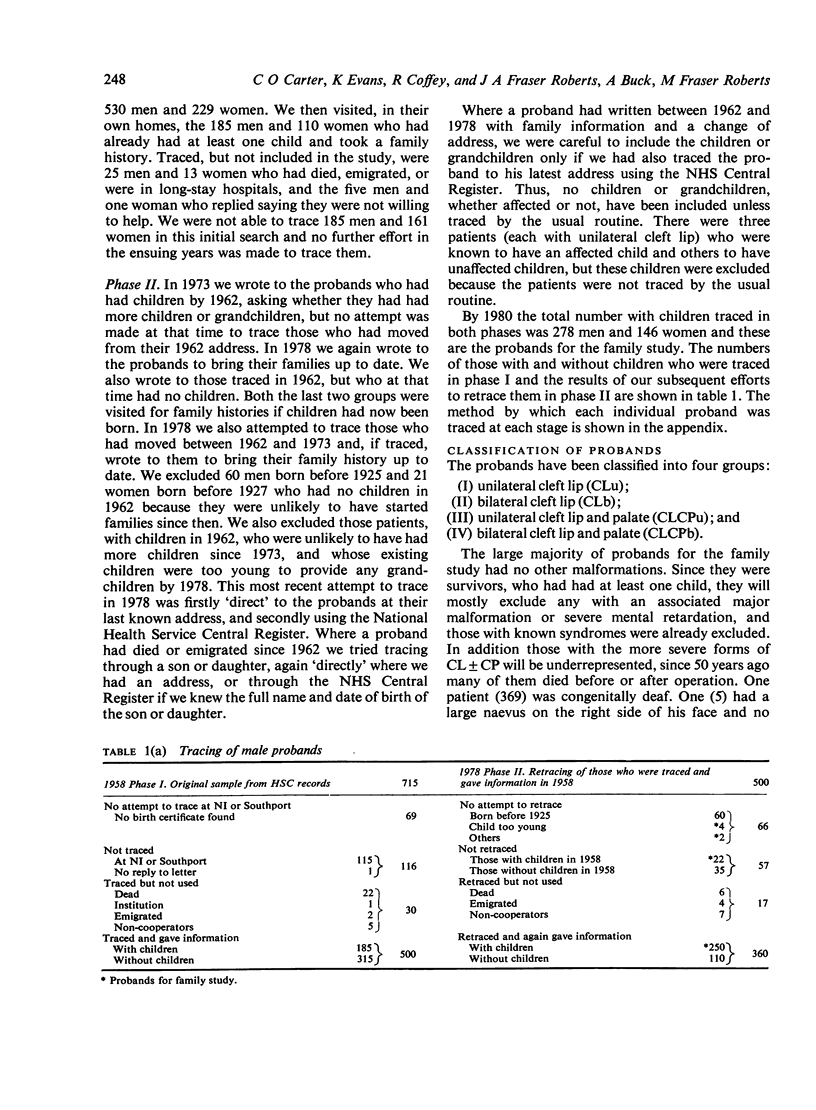

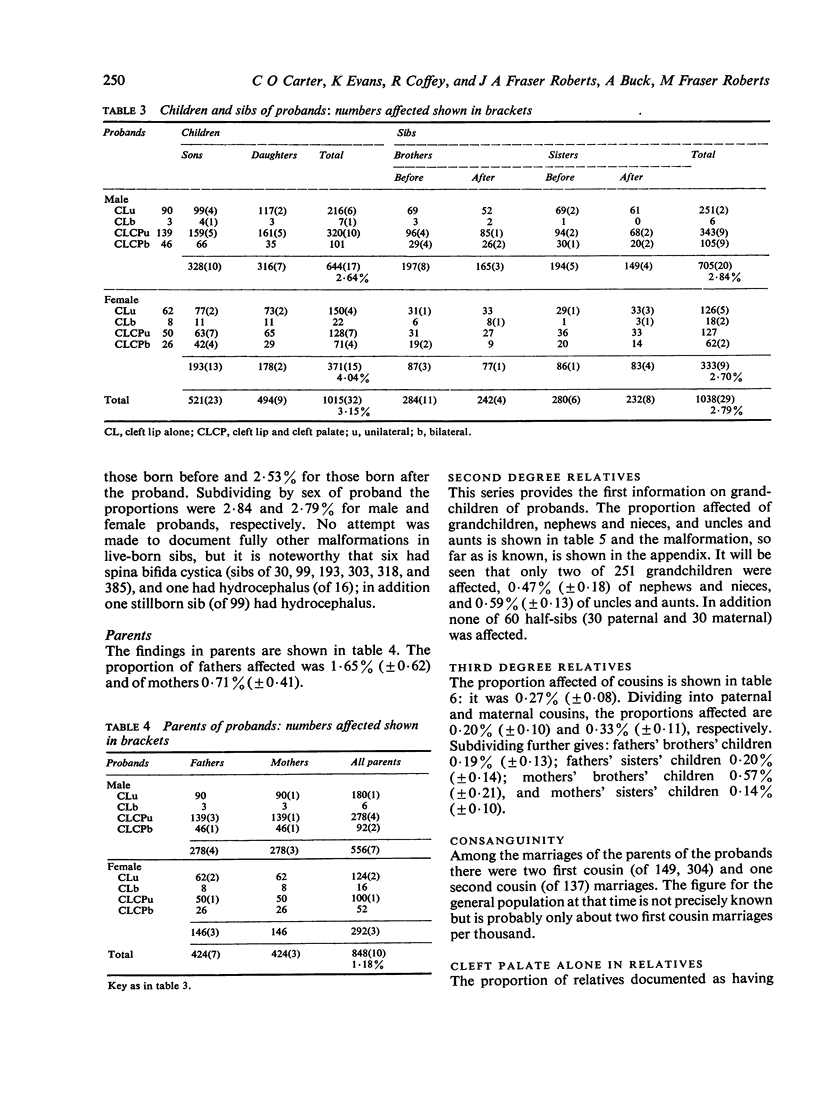
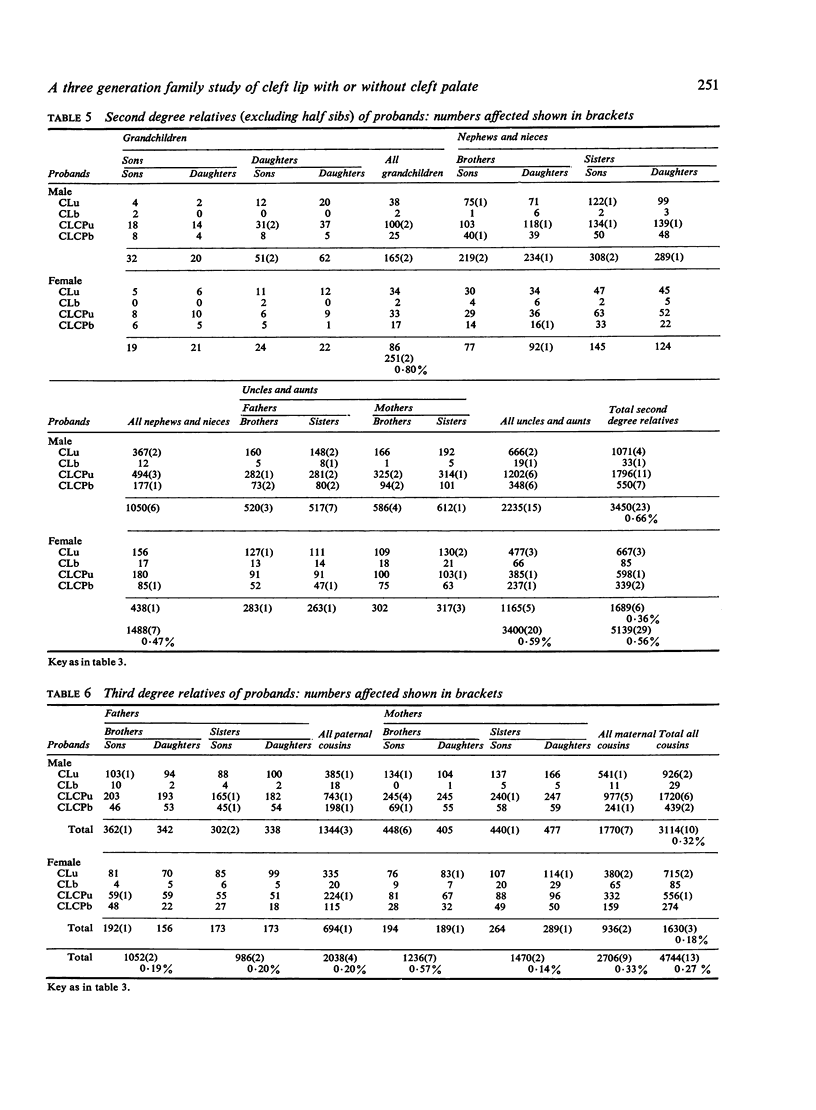
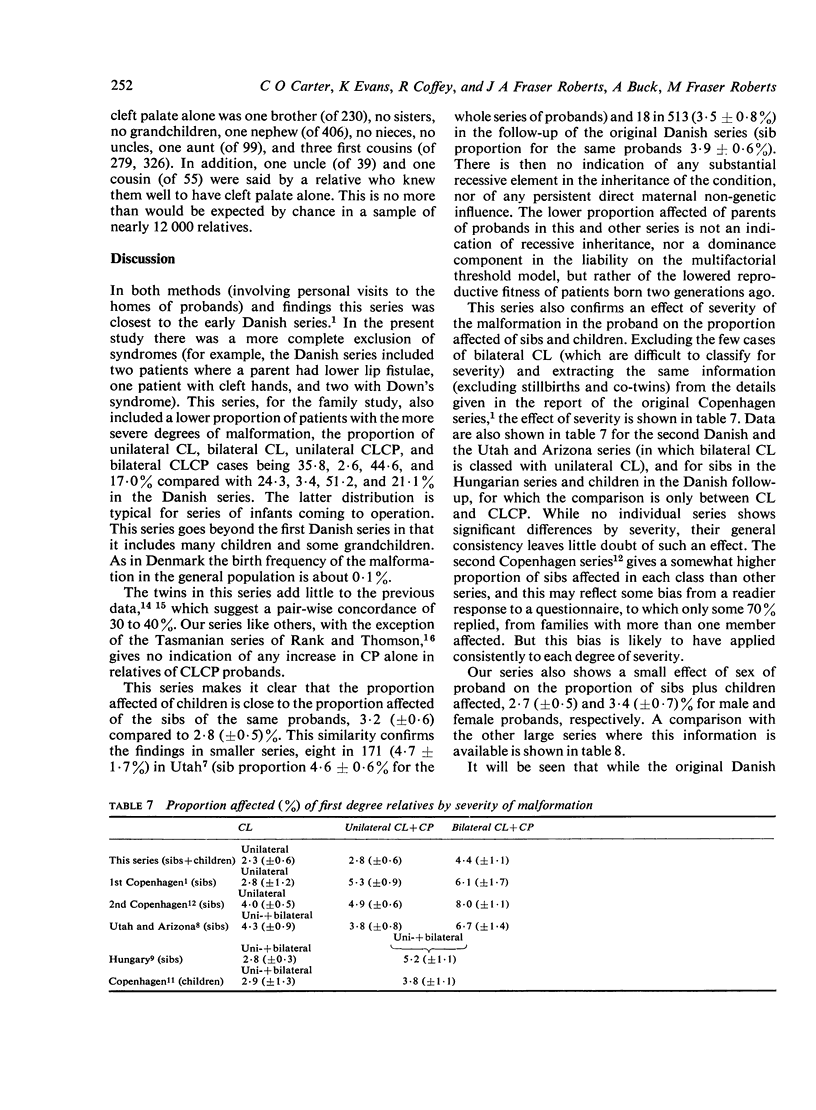
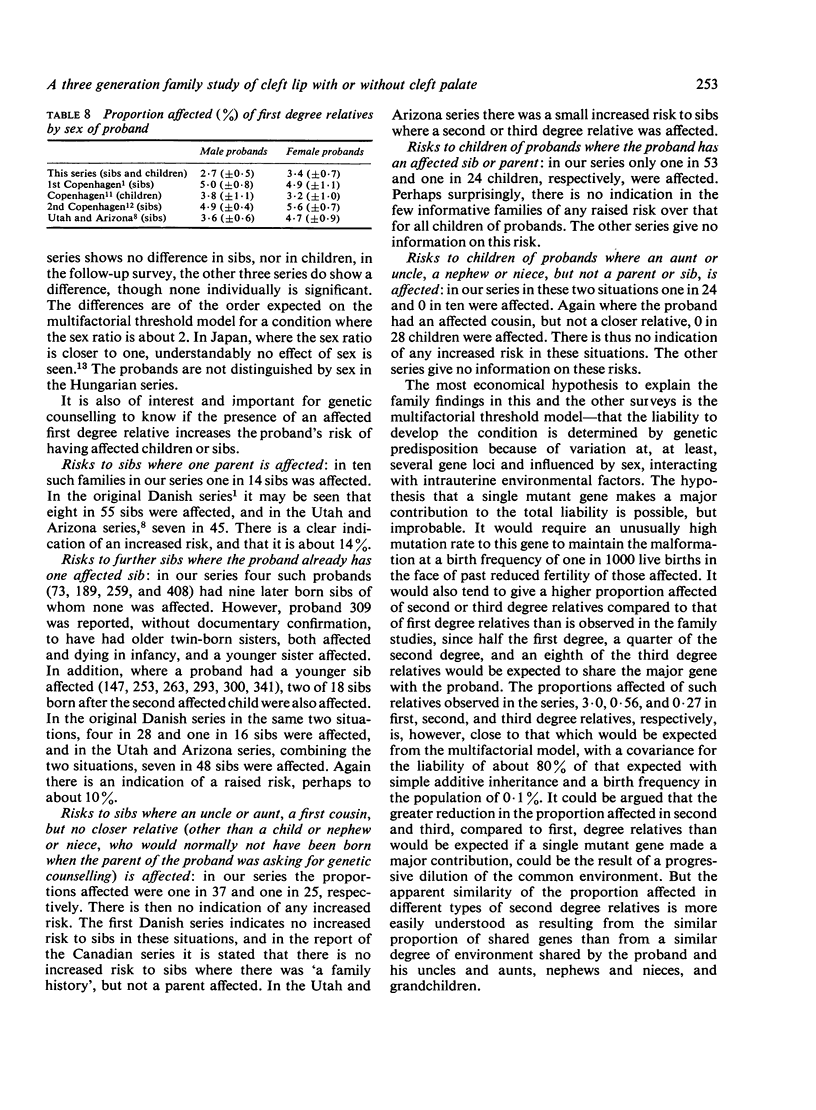

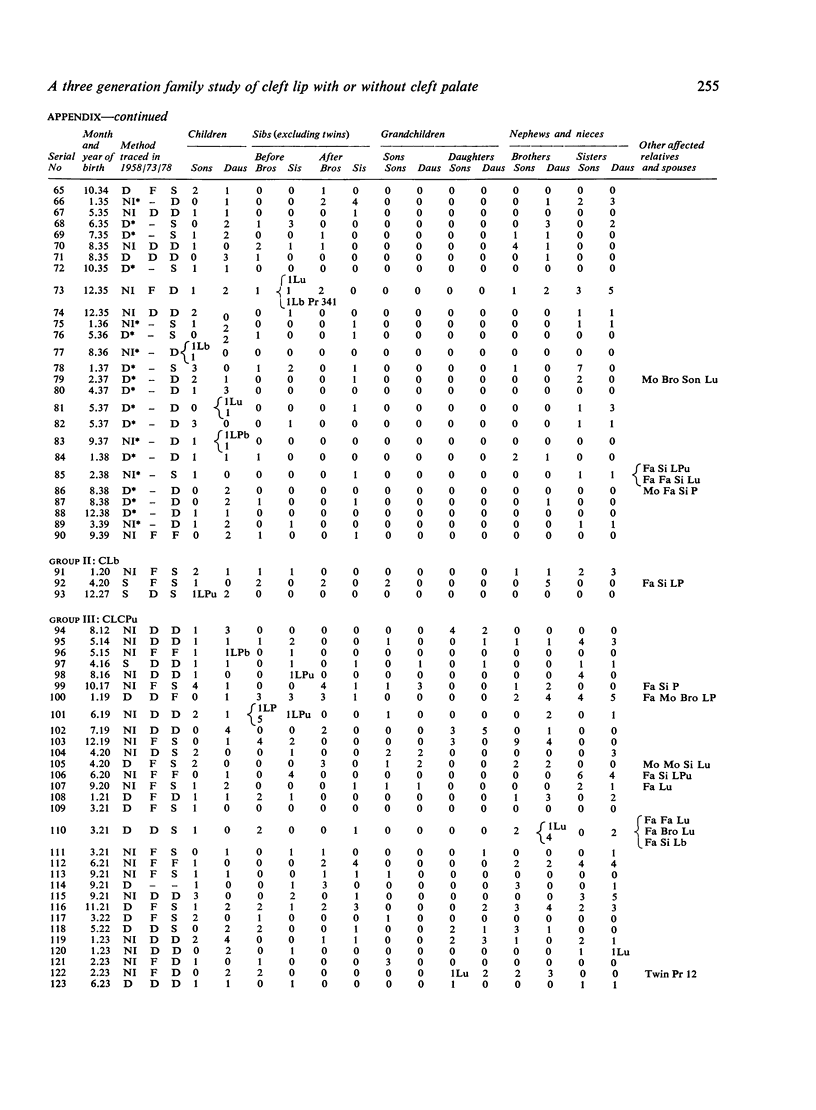
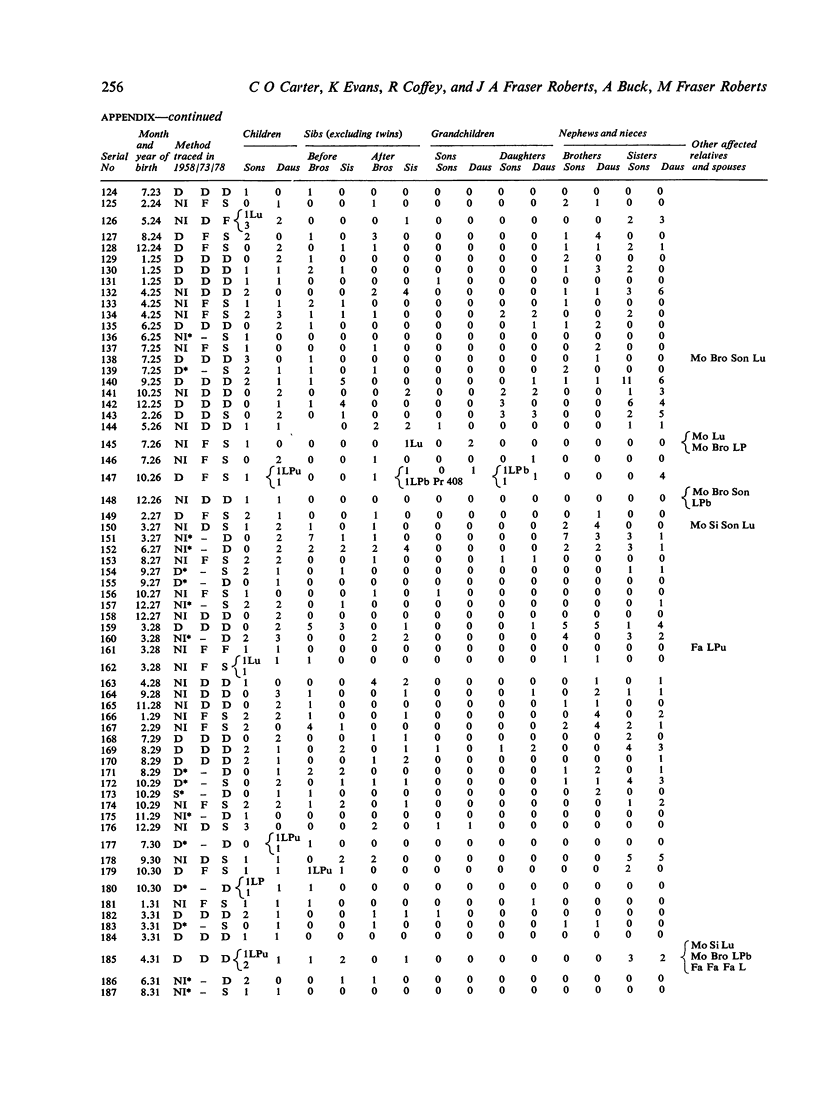
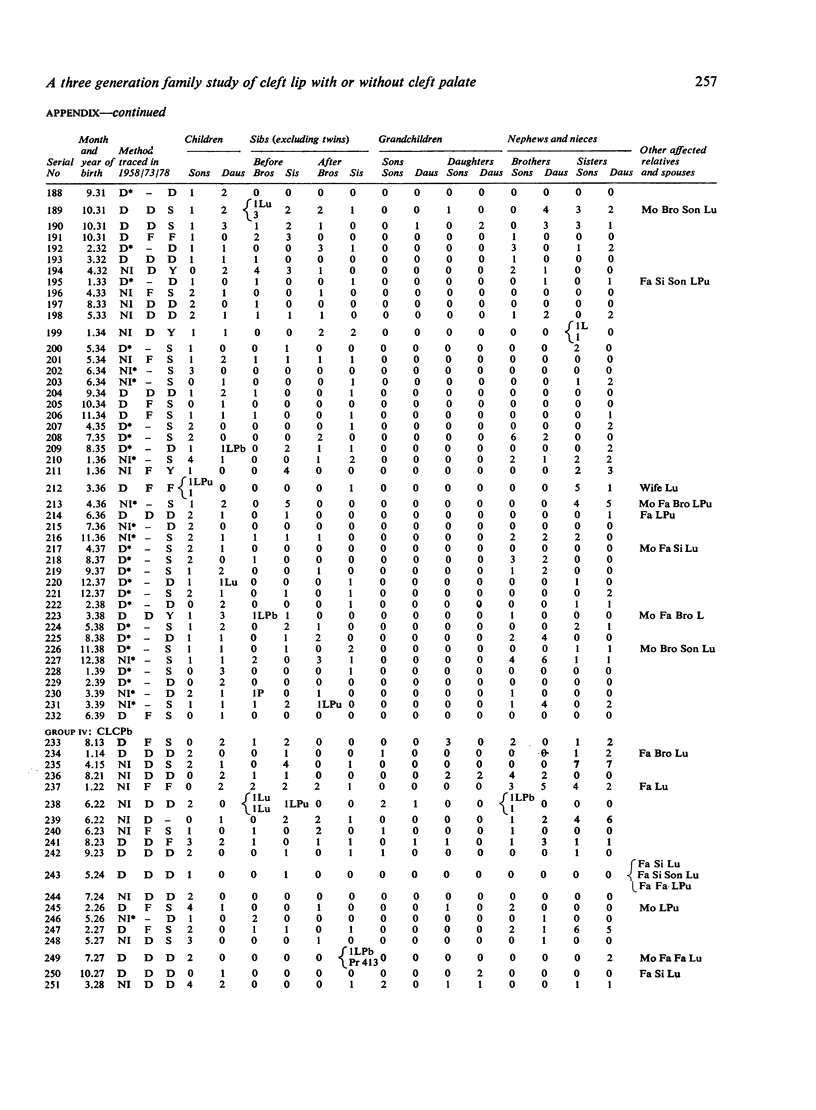
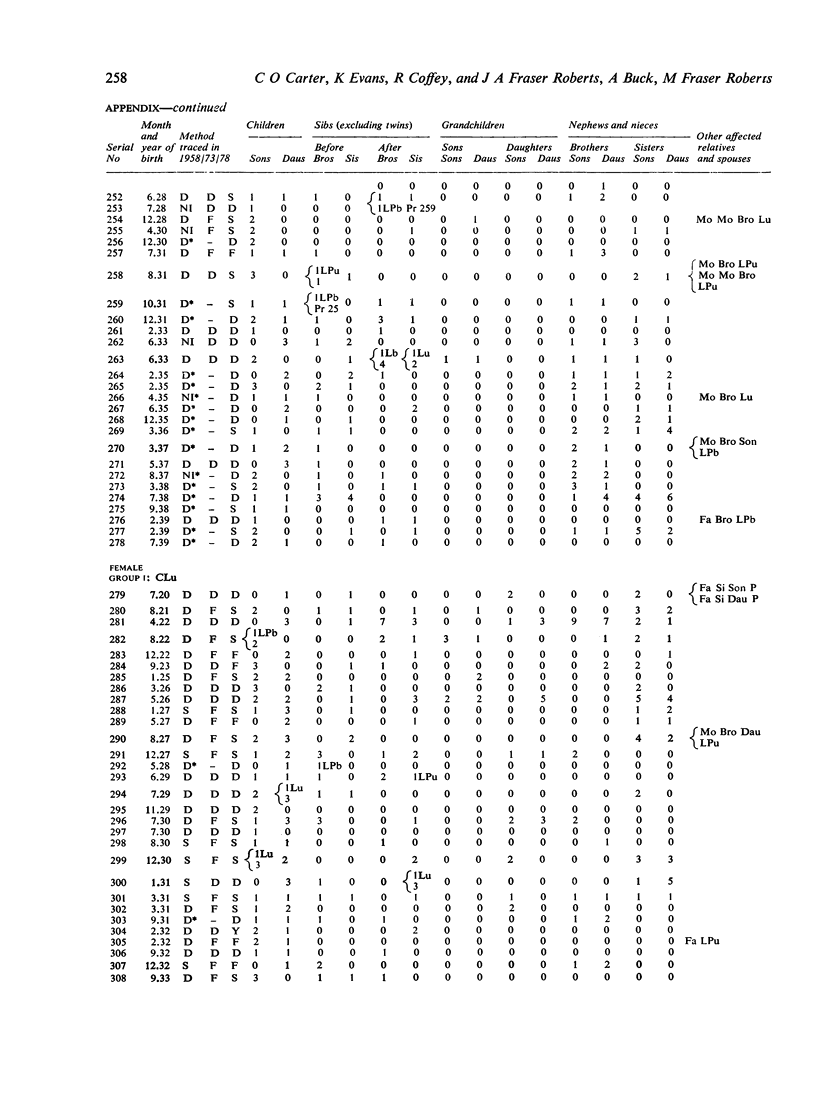
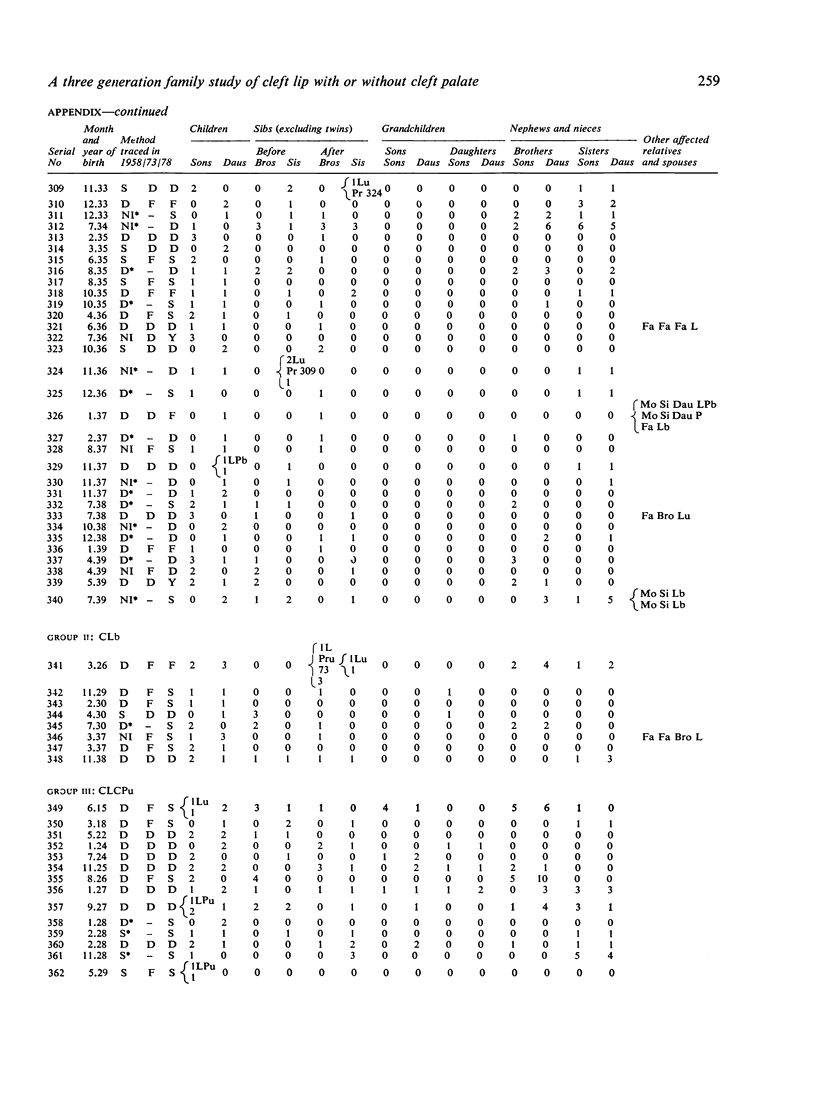
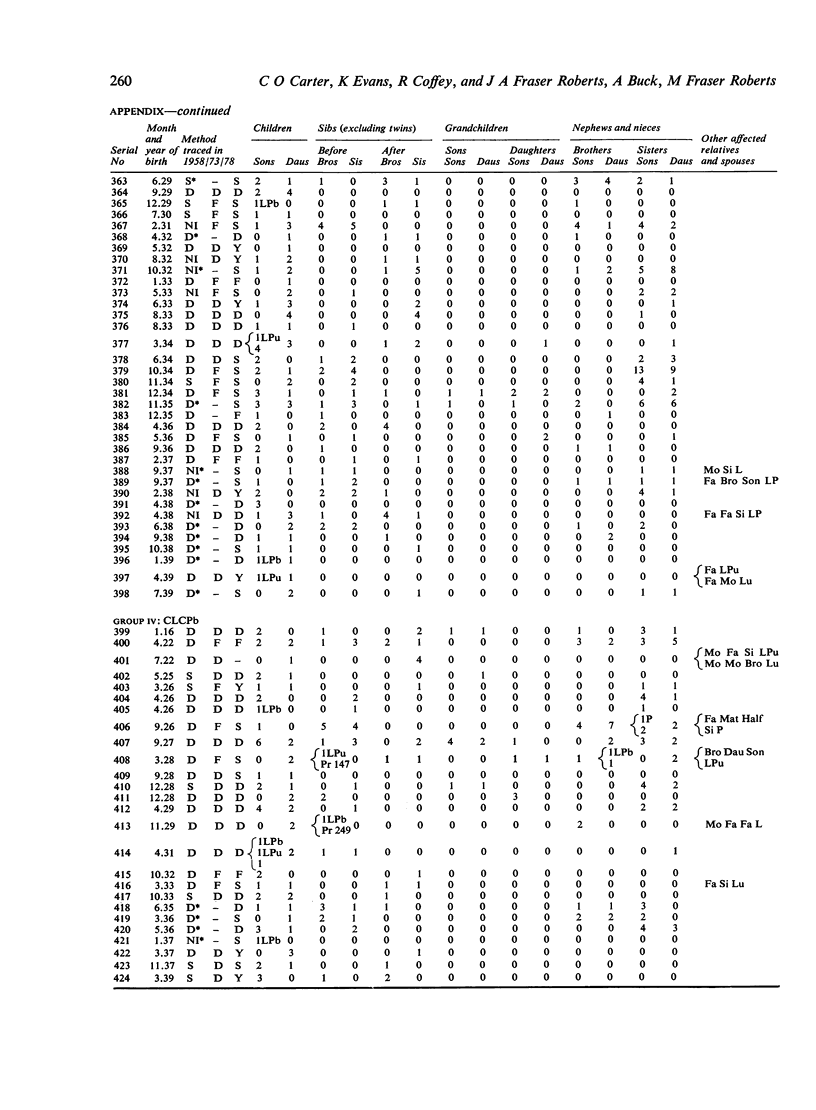
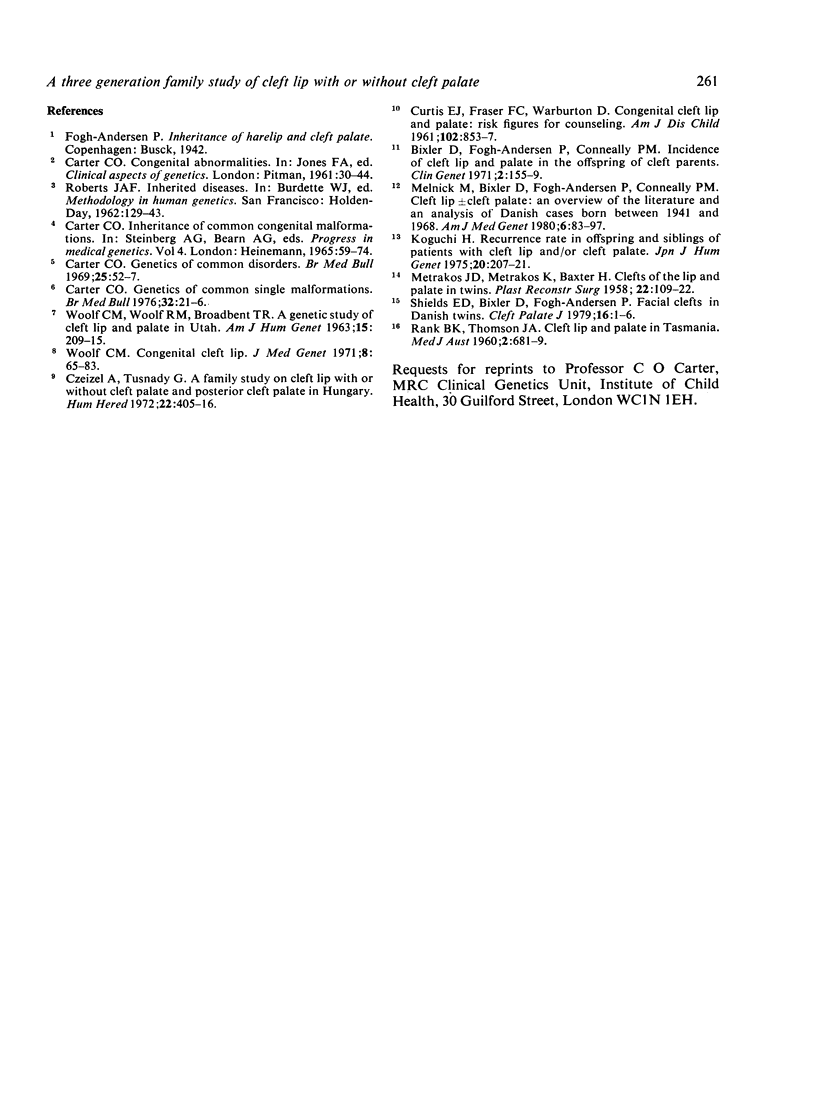
Selected References
These references are in PubMed. This may not be the complete list of references from this article.
- Bixler D., Fogh-Andersen P., Conneally P. M. Incidence of cleft lip and palate in the offspring of cleft parents. Clin Genet. 1971;2(3):155–159. doi: 10.1111/j.1399-0004.1971.tb00271.x. [DOI] [PubMed] [Google Scholar]
- Carter C. O. Genetics of common disorders. Br Med Bull. 1969 Jan;25(1):52–57. doi: 10.1093/oxfordjournals.bmb.a070671. [DOI] [PubMed] [Google Scholar]
- Carter C. O. Genetics of common single malformations. Br Med Bull. 1976 Jan;32(1):21–26. doi: 10.1093/oxfordjournals.bmb.a071318. [DOI] [PubMed] [Google Scholar]
- Czeizel A., Tusnady G. A family study on cleft lip with or without cleft palate and posterior cleft palate in Hungary. Hum Hered. 1972;22(5):405–416. doi: 10.1159/000152518. [DOI] [PubMed] [Google Scholar]
- Koguchi H. Recurrence rate in offspring and siblings of patients with cleft lip and/or cleft palate. Jinrui Idengaku Zasshi. 1975 Dec;20(3):207–221. [PubMed] [Google Scholar]
- METRAKOS J. D., METRAKOS K., BAXTER H. Clefts of the lip and palate in twins; including a discordant pair whose monozygosity was confirmed by skin transplants. Plast Reconstr Surg Transplant Bull. 1958 Aug;22(2):109–122. doi: 10.1097/00006534-195808000-00003. [DOI] [PubMed] [Google Scholar]
- Melnick M., Bixler D., Fogh-Andersen P., Conneally P. M. Cleft lip+/-cleft palate: an overview of the literature and an analysis of Danish cases born between 1941 and 1968. Am J Med Genet. 1980;6(1):83–97. doi: 10.1002/ajmg.1320060108. [DOI] [PubMed] [Google Scholar]
- RANK B. K., THOMSON J. A. Cleft lip and palate in Tasmania. Med J Aust. 1960 Oct 29;47(2):681–689. [PubMed] [Google Scholar]
- Shields E. D., Bixler D., Fogh-Andersen P. Facial clefts in Danish twins. Cleft Palate J. 1979 Jan;16(1):1–6. [PubMed] [Google Scholar]
- WOOLF C. M., WOOLF R. M., BROADBENT T. R. A genetic study of cleft lip and palate in Utah. Am J Hum Genet. 1963 Jun;15:209–215. [PMC free article] [PubMed] [Google Scholar]
- Woolf C. M. Congenital cleft lip. A genetic study of 496 propositi. J Med Genet. 1971 Mar;8(1):65–83. doi: 10.1136/jmg.8.1.65. [DOI] [PMC free article] [PubMed] [Google Scholar]


